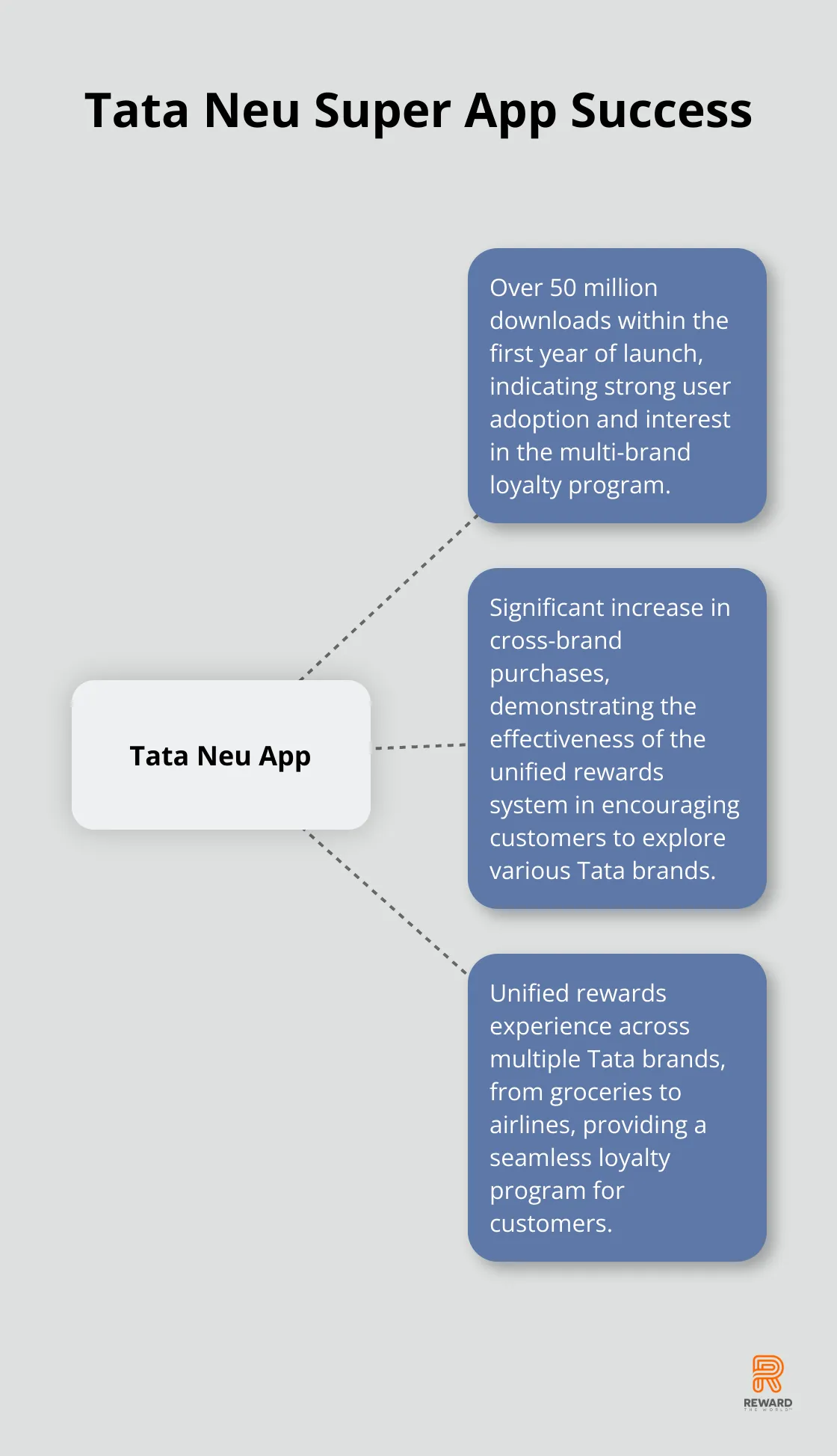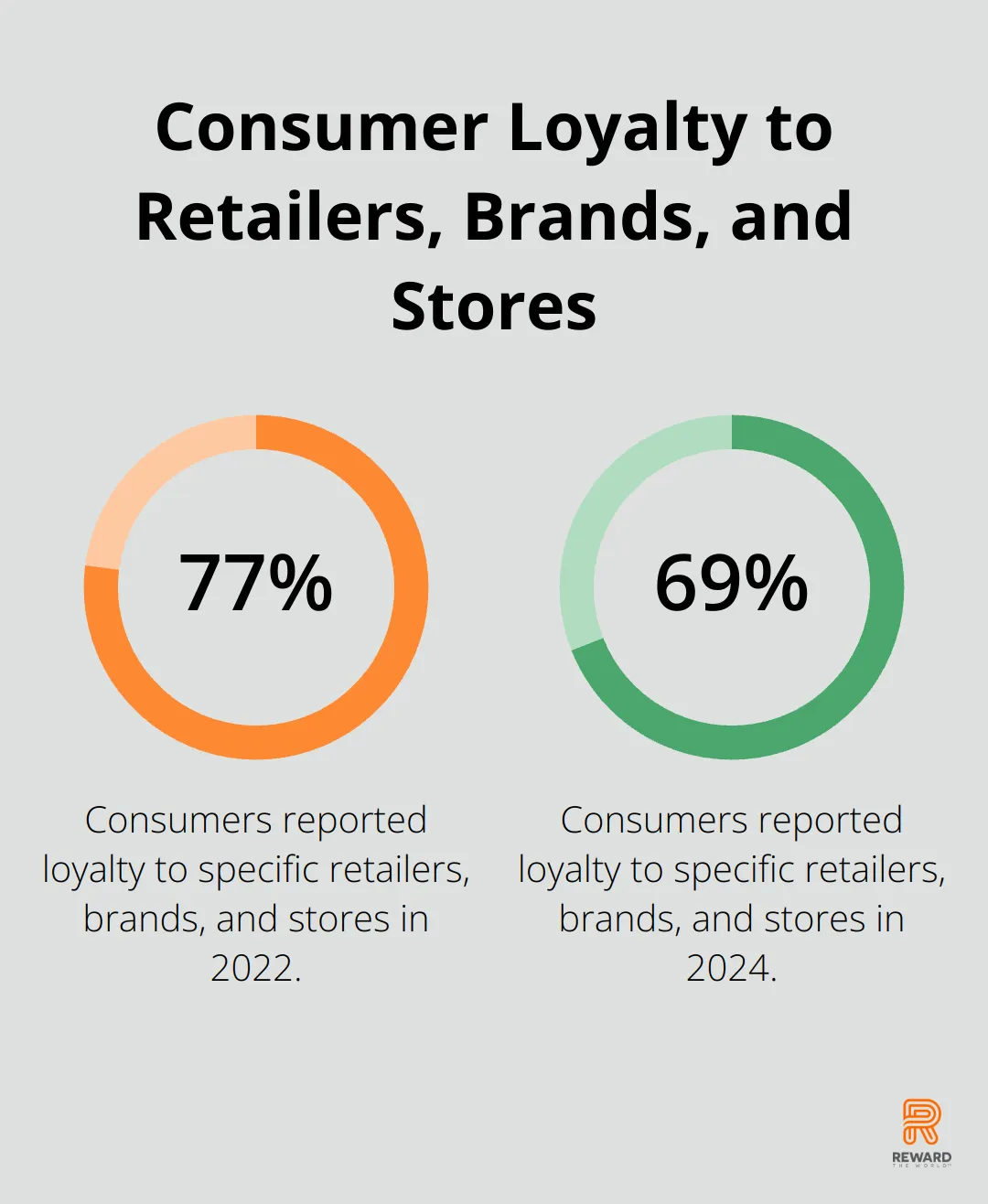
Multi-brand loyalty programs are transforming the way companies engage with customers. These innovative loyalty ecosystems allow businesses to offer a unified rewards experience across multiple brands, enhancing customer satisfaction and driving cross-brand sales.
At Reward the World, we’ve seen firsthand how seamless loyalty experiences can significantly boost customer retention and lifetime value. In this post, we’ll explore strategies for creating a cohesive multi-brand loyalty program that delights customers and drives business growth.
What Are Multi-Brand Loyalty Programs?
Definition and Benefits
Multi-brand loyalty programs allow customers to earn and redeem rewards across multiple brands within a single ecosystem. These programs create a unified experience, which encourages customers to engage with various brands under one umbrella.
These powerful tools drive significant benefits. They typically increase customer engagement and boost cross-brand sales. This approach not only enhances customer satisfaction but also provides valuable data insights for businesses.
Key Elements of Seamless Loyalty Experiences
To create a truly seamless multi-brand loyalty experience, several components stand out as essential:
- Centralized Customer Database: This allows for consistent recognition across all touchpoints, regardless of which brand the customer interacts with.
- Unified Rewards Structure: Customers should earn and redeem points across all participating brands without confusion. For example, a program might offer 1 point per dollar spent, redeemable at any brand within the ecosystem.
- User-Friendly Interface: A non-negotiable aspect is easy access to accounts, points balances, and redemption options. The Starbucks Rewards program exemplifies this with its intuitive app that seamlessly integrates ordering, payment, and rewards.
Success Stories in Multi-Brand Loyalty
Several companies have successfully implemented multi-brand loyalty programs. The Marriott Bonvoy program stands out as a prime example, unifying rewards across multiple hotel brands. This program has seen strong performance, with global RevPAR rising by 4.1% in Q1 2025, surpassing the upper end of its guidance.
Another success story is the Tata Neu super app in India. This program allows users to earn and redeem points across various Tata brands, from groceries to airlines. Within its first year, the app saw over 50 million downloads and significantly increased cross-brand purchases.

For businesses looking to implement their own multi-brand loyalty program, platforms like Reward the World offer turnkey solutions. Such systems can seamlessly integrate multiple brands, provide instant reward delivery, and offer robust analytics to track program success.
Multi-brand loyalty programs are not just a trend; they’ve become a necessity in today’s interconnected business landscape. These programs significantly enhance customer loyalty, drive cross-brand sales, and provide valuable insights into customer behavior. As we move forward, let’s explore the strategies for implementing a unified loyalty system that can take your multi-brand program to new heights.
How to Build a Unified Loyalty System
Centralize Customer Data
The foundation of any successful multi-brand loyalty program is a centralized customer database. This single source of truth allows for consistent recognition and personalized experiences across all brands.
Start by auditing your existing customer data across all brands. Identify common data points and create a standardized format for storing information. Next, invest in a robust Customer Data Platform (CDP) that can integrate data from various sources.
When you select a CDP, prioritize features like real-time data synchronization, advanced segmentation capabilities, and strong data governance tools.
Create a Consistent Rewards Structure
A unified rewards structure is essential for customer understanding and engagement. Develop a points system that’s easy to understand and applies consistently across all brands. For example, you might offer 1 point for every dollar spent, regardless of the brand.
Consider tiered rewards to encourage increased spending across the brand portfolio. For instance, customers who reach 1,000 points might unlock premium rewards or exclusive experiences.
Redemption options should be diverse and appealing across all brands. A 2024 loyalty program study indicates that flexible redemption options increase program satisfaction by 30%.

Design a User-Friendly Interface
A seamless user interface is non-negotiable for program success. Develop a mobile app that serves as a central hub for all program interactions. Ensure the app provides real-time points balances, easy redemption options, and personalized offers based on customer behavior across all brands.
Starbucks Rewards exemplifies an effective interface. Their app integrates ordering, payment, and rewards seamlessly.
When you design your interface, prioritize speed and simplicity. Ensure your app loads quickly and requires minimal clicks for key actions like checking points or redeeming rewards.
Implement Cross-Brand Promotions
Leverage the power of your multi-brand ecosystem by implementing cross-brand promotions. These promotions encourage customers to explore and engage with multiple brands within your portfolio.
For example, you could offer bonus points for making purchases from three different brands within a month. Or, create exclusive “brand bundle” rewards that combine products or services from multiple brands.
Cross-brand promotions not only increase customer engagement but also drive sales across your entire brand portfolio. They provide a unique value proposition that single-brand loyalty programs can’t match.
Monitor and Optimize Performance
Building a unified loyalty system is an ongoing process that requires continuous monitoring and optimization. Use analytics tools to track key performance indicators (KPIs) such as enrollment rates, active user rates, and cross-brand purchase behavior.
Regularly gather customer feedback through surveys and focus groups. This qualitative data can provide valuable insights into user experience and satisfaction that may not be captured by quantitative metrics alone.
As you analyze your data and gather feedback, be prepared to make adjustments to your program. This might involve tweaking your rewards structure, updating your user interface, or introducing new cross-industry reward programs.
The journey to create a seamless multi-brand loyalty experience doesn’t end with implementation. In fact, that’s just the beginning. Next, we’ll explore some of the common challenges businesses face when running multi-brand loyalty programs and how to overcome them.
Navigating Multi-Brand Loyalty Challenges
Preserving Brand Identity
Multi-brand loyalty programs must maintain individual brand identities. Customize reward offerings for each brand while keeping a unified point system. A luxury fashion brand might offer exclusive runway show access, while a casual dining chain provides cooking classes.
Implement brand-specific tiers within the overall program structure. This allows each brand to maintain its unique appeal while still benefiting from the broader loyalty ecosystem. A 2024 Forrester study found that programs balancing brand individuality with overall cohesion see a 25% higher engagement rate.
Ensuring Data Privacy and Security
Managing customer information across multiple brands requires careful handling. Implement robust encryption methods and regular security audits. Blockchain technology enhances data security.
Transparency is key. Communicate your data usage policies clearly to customers. A 2025 consumer survey revealed that 69% of respondents report loyalty to specific retailers, brands, and stores in 2024, a drop from 77% in 2022.

Balancing Brand Needs with Program Goals
Striking a balance between individual brand objectives and overarching program goals can be challenging. Establish a governance structure that includes representatives from each brand. This ensures all voices are heard while maintaining program cohesion.
Set clear KPIs for both individual brands and the overall program. Track brand-specific metrics (like category share increase) alongside program-wide metrics such as cross-brand purchase frequency. A recent McKinsey report showed that promo uplift predicts promotion ROI by analyzing customer behavior during promotion and no-promotion periods.
Technology Integration
Integrating various technological systems across multiple brands can be complex. Choose a platform that offers seamless integration capabilities. Reward the World stands out as a top choice, providing turnkey solutions that easily connect with existing systems.
Ensure the chosen platform supports real-time data synchronization and offers robust API capabilities. This allows for smooth information flow between different brand systems and the central loyalty program.
Customer Education and Engagement
Educating customers about a multi-brand loyalty program can be challenging. Create clear, concise communication materials that explain how the program works across different brands. Use various channels (email, social media, in-store displays) to reach customers effectively.
Develop engaging onboarding processes that highlight the benefits of participating in the multi-brand program. Consider gamification elements to make the learning process more interactive and enjoyable for customers.
Final Thoughts
Creating a seamless multi-brand loyalty experience enhances customer engagement and drives growth across brand portfolios. Companies can build powerful loyalty ecosystems through centralized customer data, consistent rewards structures, and user-friendly interfaces. These ecosystems resonate with customers and encourage cross-brand purchases, ultimately strengthening relationships between customers and entire brand portfolios.
The future of multi-brand loyalty programs will likely involve increased use of artificial intelligence for personalized rewards and a greater focus on experiential offerings. We expect to see more sustainability initiatives integrated into loyalty programs as consumer values continue to evolve. These advancements will further enhance the effectiveness and appeal of multi-brand loyalty ecosystems.
Reward the World offers a comprehensive solution for businesses ready to elevate their loyalty efforts. Our platform provides the tools needed to create and manage effective multi-brand loyalty programs, including global reach, instant reward delivery, and robust analytics. Businesses can leverage Reward the World to overcome common challenges and create loyalty ecosystems that drive long-term customer value and business growth.
